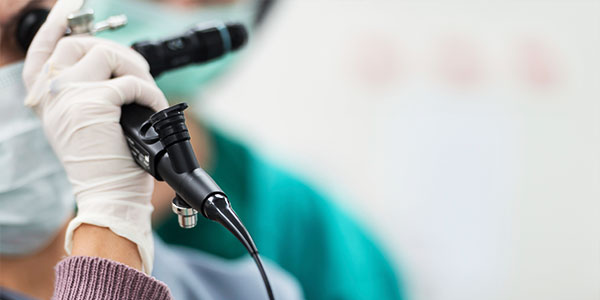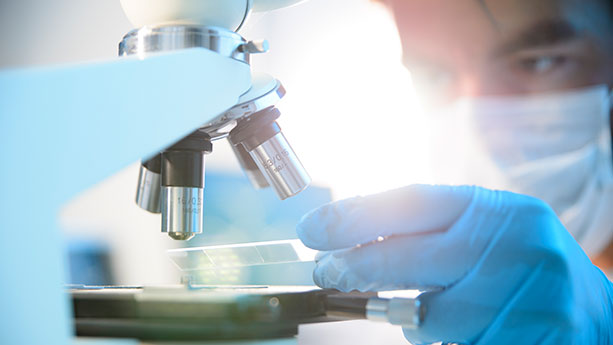Interventional pulmonology is a noninvasive way to diagnose and treat lung disorders. This includes lung cancer, emphysema, benign airway disorders and pleural diseases. The Interventional Pulmonology program at the Palo Alto Medical Foundation Mountain View Center is the only one on the West Coast offering 26 diagnostic and therapeutic procedures.
PAMF interventional pulmonary is a collaboration program with UCSF and El Camino Hospital and is one of the leading programs in the country. Our interventional pulmonologists collaborate with doctors in radiation oncology, thoracic surgery and medical oncology, and offer leading-edge, noninvasive and minimally invasive procedures, such as the inReach electromagnetic navigation bronchoscopy system.
Most interventional pulmonology procedures target airways, lung lesions or tumors, and are done as outpatient procedures. Here are some of the services we offer.
Airway Opening
Interventional pulmonologists can open narrowed airways using a number of different minimally invasive procedures. An airway stent can open airways obstructed or narrowed by infection, tumors or scar tissue.
Balloon dilation is another option and similar to an angioplasty. In this procedure, a balloon is used to open an airway. Depending on the location of the narrowed airway, dilation can be performed using a bronchoscope.

If you suffer from asthma, bronchial thermoplasty uses radiofrequency energy to heat the smoother muscle walls of your airways and can help lessen your symptoms.
Lung Lesion Treatment
Doctors at PAMF diagnose and treat lung lesions with image-guided techniques, such as electromagnetic navigational bronchoscopy. We use the SuperDimension inReach system, and other newer technologies, which gives doctors access to peripheral lung lesions and mediastinal lymph nodes. This minimally invasive procedure is recommended if you have multiple lesions, need a diagnosis before surgery, or cannot tolerate more invasive procedures.
Using ultrasound technologies, your interventional pulmonologist can perform biopsies in multiple areas, resulting in greater accuracy. To biopsy lymph nodes in the middle of the chest, an endobronchial ultrasound (EBUS) is used; a radial probe ultrasound (REBUS) is used for peripheral lung lesions. Because the pulmonologist can see the needle as it is placed inside the abnormality, the risk of puncturing a blood vessel is minimized.
Endobronchial Treatment of Emphysema
In some cases of emphysema, we can improve symptoms with a lung volume reduction, placing coils or one-way valves in the airway to improve breathing and lung function.
Pleuroscopy
When a laparoscopy is performed in the chest it is called pleuroscopy or medical thoracoscopy. A small instrument with a camera is inserted into the chest cavity through a very small incision, enabling the doctor to perform diagnostic and therapeutic procedures inside the chest.
Tumor Removal
Some tumors are excellent candidates for radiosurgery, where fiducial markers are placed in or near a tumor, so that radiation can be delivered precisely.
Argon plasma coagulation (APC) is another treatment option that is useful for covering a large surface area. With APC, heat from an electric current is used to destroy tumors or stop bleeding, and an accompanying argon gas jet allows heat to be applied without making direct contact.
Extreme cold can also be used to destroy airway tumors by freezing the tissue through cryotherapy. In this procedure, a probe that has been super-cooled is applied repeatedly over the entire surface of the tumor tissue. APC can also be used with cryotherapy to re-canalize airways obstructed by a tumor.
Cryobiopsy
Cryobiopsy is a less invasive alternative to surgical methods for collecting a lung tissue sample for biopsy. During a cryobiopsy, a surgical instrument called a cryoprobe applies extreme cold to the periphery of the lung, extracting a piece of tissue. Compared to other lung biopsy methods, this technique can collect a larger tissue sample that is better for diagnosing lung diseases.
Cryotherapy
Using either a rigid or flexible bronchoscopy, cryotherapy destroys airway tumors by freezing the tissue. A probe that has been super-cooled is applied repeatedly over the entire surface of the tumor tissue. This procedure can be used in conjunction with argon plasma coagulation to recanalize airways occluded by a tumor or by granulation tissue, which forms as part of a healing process.













